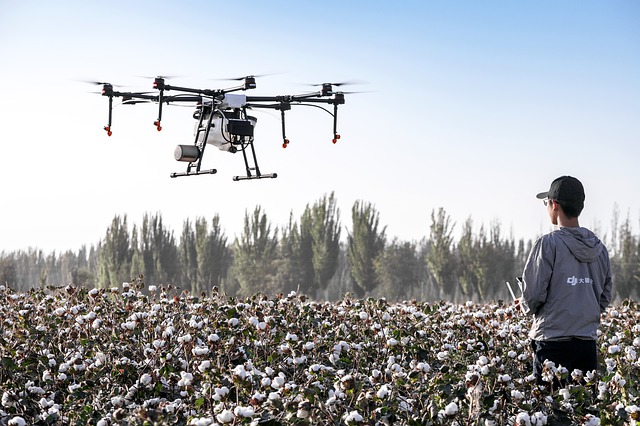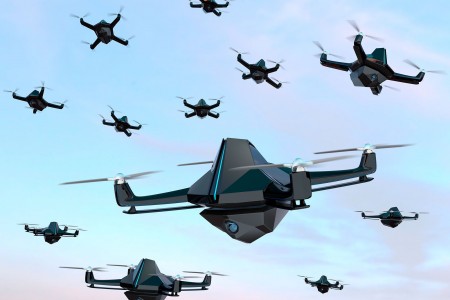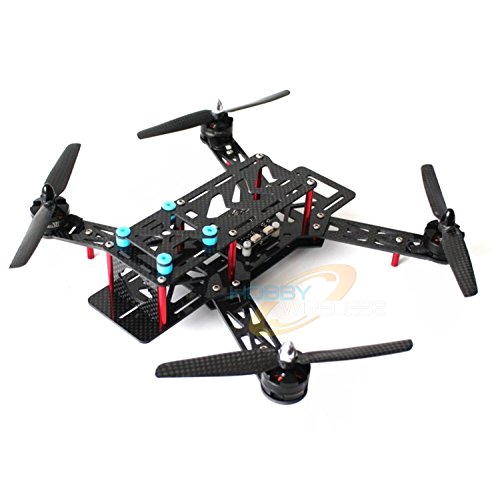
While there are many advantages to using drones for inspection, not all drones will be suitable for your job. Although drones are useful in inspecting assets, it is still necessary to do the repairs manually. The drones can be used as an additional tool for inspectors. Some inspectors prefer to use the inspection cameras that they have hung from ropes, while others may drop them off at assets. In these situations, drones are the perfect tool.
Drone 20
The drone's ability to quickly capture high-quality images at high speeds is one of its greatest advantages. Drones offer a consistent image and can eliminate the need to abseil down a building to view the contents. You can identify small imperfections or missing elements with the zoomed view. In the US, the team at Shell Deer Park has been using drones for inspection since 2016. The drones can be used to inspect industrial equipment such as flare tips or floating roof tanks and capture detailed information without human intervention.
Thermal camera
The thermal camera can be attached to a drone to inspect. There are many benefits. First, you can quickly inspect large areas. Second, thermal imaging can be performed faster than any other type of inspection. You can also view objects from close-up. Emitec drones are equipped with advanced thermal imaging systems and use a proprietary HD Downlink solution to transmit thermal images to multiple monitors, or to a tablet PC.
Light
Drones have existed for many years, but the technology behind them has improved significantly over time. You can use a drone to collect data for a wide variety of purposes, whether you are using it for inspection or industrial purposes. Drones are a popular choice in the energy field for inspecting gas and powerlines and generating valuable insight. The drone can inspect wind turbines by surveying the nacelles, leading edges and lightning receptors. A drone can collect data on the health of the turbine and also take high-resolution photographs of any damage. This data can then help plan the repair work.

Vertical attachment mechanism
A vertical attachment mechanism allows a drone to be attached to a surface. These drones can hover above the surface at a high level, and the sensor probe may be detached from it while it is being tested. Their articulating joints allow them to hover over the surface. This may help absorb some impact from a UAV that lands on its back. They can also remotely be controlled and partly automated.
Safety
Drones are an increasingly popular way to inspect. Drones are a great way for companies to reduce the cost of material transport, monitor and inspect, as well as streamline their inspection procedures. FCC units convert heavy crude oil in to more valuable fuel products. It includes several pipes and multiple cyclones. A riser pipe is the one that mixes heavy oil and powdered catalytic at high temperatures in the center. In order to inspect this pipe manually, inspection workers would have to saw an access hatch in the top of the riser, then lower themselves inside the pipe using ropes. With a drone, this risk is eliminated completely.
Cost
There are many benefits to using drones to inspect construction sites. A drone inspection is a cost-saving option that eliminates the need to use heavy machinery and scaffolding. The downtime that scaffolding can cause is costly and can also lead to increased costs. Drones not only save time but also lower the cost of liability insurance. It is possible to save thousands of dollars annually on maintenance. Although drone inspections are used by many construction companies, they are not the only ones.
Efficiency
While drones are useful for inspection, they can't replace human inspectors. A typical inspection task may take from 10 to 12 hours if there is a technician present. Using drones can accomplish this task in less than an hour. These drones can also access confined spaces, which humans can't reach. This allows companies to save thousands on inspection costs. This technology isn’t yet available for every industry.

FAQ
Is it possible to fly a helicopter while driving?
Drone flying while driving can be dangerous as you may collide with another vehicle or object. Also, you could hit pedestrians or animals. A collision with power lines, trees, buildings, or power lines could cause serious damage to your vehicle.
Can I fly my drone indoors
Yes, your drone can be flown indoors. It is important to make sure there are no hazards or obstacles in your home. Avoid flying near windows, doors and heating vents.
What's the difference between quadcopters and hexacopters?
A quadcopter is an four-rotor helicopter which flies in the same manner as a conventional helicopter. It has four rotors which rotate independently. A hexacopter is similar to a quadcopter except that it has six rotors instead of four. Hexacopters have more stability and maneuverability than quadcopters.
What are the rules regarding drone operation?
You need to register your drone with the FAA. The registration process involves providing information about your drone, such as its weight, size, battery power, and frequency. The FAA will issue you an identification number.
Statistics
- According to Indeed, a drone pilot gets paid $25.73 per hour on average in the US. (dronesgator.com)
- According to industry research from ZipRecruiter , there are 10 cities where the typical salary for a Drone Pilot job is above the national average. (dronesgator.com)
- Research and Markets predict a growth rate of 51.1% over the next five years. (thedroneu.com)
External Links
How To
How to Fly Drones with Beginners
A drone is a remote-controlled aircraft used for aerial photography, cinematography, surveillance, scientific research, and hobby purposes. Drones are a technology that has been around since World War II. DJI's Phantom series quadcopters were first commercially available in 2010. Since then, there have been many different types of drones available, from beginner-friendly models like the Parrot AR Drone 2.0 to professional-grade multi-rotor craft like the DJI Mavic Pro.
There are several ways to fly a drone, including;
-
Remote control: This uses a remote control device that attaches to your hand and allows you control the drone along its flight path. There are two main types, On/Off switches (like radios) and joysticks.
-
Manual Control – This method lets users remotely control the drone by using a smartphone app. Follow the instructions of the app to track the exact location you want the drone go.
-
Autonomous Flight – This is when the drone handles all the piloting tasks. It's basically flying autonomously without any human intervention. The drone must be equipped with a camera and sensors that can capture images and data in order to fly autonomously.
-
Triggered Flight: This is similar in concept to manual control. The pilot manually creates a route and the drone then follows it until it reaches that endpoint. After the program is complete, the drone automatically returns to the ground.
-
Landing Gear – Some drones are equipped with landing gear, which allows them to safely land if they lose power during flight.
-
Goggles - Pilots may wear goggles to shield themselves from flying debris.
-
Camera - You can capture photos and videos with your drone from the air.
-
Obstacles-Some drones come with obstacle avoidance devices that keep them from hitting obstructions.
-
Speed – Some drones can reach speeds in excess of 40 mph.
-
Battery Life: Most drones have a battery life of between 20 and 30 minutes depending on how many power sources you use.
-
Distance - Some drones can travel up 30 miles depending on the model.
-
Power source - Some drones require an external power source; others work off internal batteries.
-
Weight - Some drones are lighter than others, while some models can weigh as much as 4 pounds.
-
Size - Drones range from small devices that fit in one's palm to large crafts that weigh more than 50 pounds.
-
Price - Drones come in a variety of price categories, including high-end models which can run into the thousands and low-cost options that can start at $100.